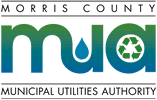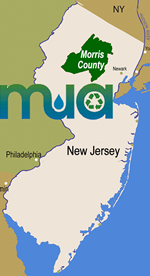Transfer Station Info (Tip Fee $111.25/ton)
- Mt. Olive Mon-Fri 7:30am-3pm; Sat 7:30am-11am
- Parsippany Mon-Fri 7am-3pm; Sat 7:30am-11am
- Closed Sundays and Major Holidays
- No Rental Trucks
- Payment by Account, Check, Credit Card. No Cash

Morris County
Municipal Utilties Authority
Transfer Station Info (Tip Fee $111.25/ton)
- Mt. Olive Mon-Fri 7:30am-3pm; Sat 7:30am-11am
- Parsippany Mon-Fri 7am-3pm; Sat 7:30am-11am
- Closed Sundays and Major Holidays
- No Rental Trucks
- Payment by Account, Check, Credit Card. No Cash
Solid Waste Material Data Sheet

Category: Plastic
Activity Type: Recycling
-
Management Issues: Waste Generation Information;
1.13 million tons or 0.54% by weight.*
620,000 tons of soft drink bottles.*
330,000 tons of custom bottles.*
180,000 tons of non-bottle packaging.*
7.2 pounds of PET bottles per person.*
8.5 pounds of all PET products per person.*
USA Recycling Information:
330,000 tons for a 34.7% bottle recycling rate.*
286,000 tons for a 26% bottle recycling rate in 1996.
(Industry data based on clear flake used for final product and export.). Other PET packages and products are recycled only minimally. Source Reduction Information:
The PET soft drink bottle is 28% lighter than it was 20 years ago.
Recycling Market (Closing the Loop) Information:
The fiber market, which uses recycled PET bottles for carpet, clothing, and other fiber uses, is recycled PET's primary market. Recycled PET also can be used for food and beverage containers. Export markets are becoming increasingly important. End-Market Specifications:
PET bottles fall under ISRI Guidelines for Plastic Scrap: P-97. These include specifications for soft drink bottles separated by color or mixed together; mixed soft drink and custom bottles; and mixed bottles with jars, tubs, trays, etc. Contamination is limited to 2%, and PET cannot be stored outdoors for more than six months unless it is covered with UV-resistant materials.
Polyvinyl chloride (PVC), which has almost the same specific gravity as PET, is a major contaminant. PVC bottles can be inadvertently mixed with PET bottles because they look alike or through inclusion of bottle caps with PVC liners. A mechanical system can be used to separate out PVC. SOURCES:
Chas Miller, senior manager of hauling and recycling for the Environmental Industry Associations (Washington, D.C.).
American Plastics Council (Washington, D.C.)
Characterization of Municipal Solid Waste in the United States: 1996 Update, U.S. EPA, Office of Solid Waste, 1997 1993 Update, U.S. EPA, Office of Solid Waste, 1994 Measurement Standards and Reporting Guidelines, National Recycling Coalition (Alexandria, Va.)
Modern Plastics National Association for Plastic Container Recovery (Charlotte, N.C.)
Resource Recycling
Scrap Specifications Circular 1997, Institute of Scrap Recycling Industries (Washington, D.C.)
Waste Age's Recycling Times
Waste Recyclers Council (Washington, D.C.)
- Handling Tips: Take off all caps and lids. They are likely to be contaminants. Crush bottles to fit more into storage containers.
-
Regulations: Recycled Content Information
Rare in soda bottles, although its use has been approved by the U.S. Food and Drug Administration. - Mandated Recycling: If generated in Morris County, this material is required to be separated at the source by the waste generator and ultimately recycled. The material may not be mixed with garbage and additionally, materials mandated to be source separated and recycled cannot be separated from disposables by anyone or any facility but the generator at the site where the recyclables and disposables are generated. A materials recovery facility may not perform separation of recyclables from disposables on behalf of the waste generator.
- Click for additional on-site information regarding Plastic #1 (PETE) Bottles
Facilities That Manage Plastic #1 (PETE) Bottles

Plane Street DPW Garage
Boonton, NJ 07005
Tel: 973-402-9460 Fax: (973) 263-4725
Email: dpw@boonton.org
WWW: www.boonton.org

155 Powerville Road (Behind Municipal Building)
Boonton Twp., NJ 07005
Tel: (973) 402-4024 Fax: (973) 402-4025
WWW: www.boontontownship.com

99 Summit Avenue
Chatham, NJ 07928
Tel: 973-635-5242
Email: publicworks@chathamborough.org
WWW: www.chathamborough.org
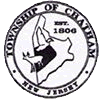
Tanglewood Lane
Chatham, NJ 07928
Tel: 973-377-5114
WWW: www.chathamtownship-nj.gov/PWD/Recycling_main.html

140 Morris Avenue
Denville, NJ 07834
Tel: 973-625-8334
WWW: www.denvillenj.org
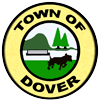
211 North Sussex Street
Dover, NJ 07801
Tel: (973) 366-2200 Ext. 3129
WWW: www.dover.nj.us

8 Melanie Lane
East Hanover, NJ 07936
Tel: 973-888-6080 Fax: 973-889-3981
WWW: www.easthanovertownship.com

295 Columbia Turnpike
Florham Park, NJ 07932
Tel: 973-410-5330
WWW: www.fpboro.net

Stoney Brook Road
Whippany, NJ 07981
Tel: 973.428.2495
WWW: www.HanoverTownship.com

Public Works Garage Yard
Millbrook Road
New Vernon, NJ 07976
Tel: 973-267-2448 Fax: 973-292-9539
Email: ttoribio@hardingnj.org
WWW: www.hardingnj.org

118 Kinnelon Road
Kinnelon, NJ 07405
Tel: 973-838-5401 x233 Fax: 973-838-1862
WWW: www.kinnelonboro.org/

370 Main Street (George Cobb Lane)
Lincoln Park, NJ 07035
Tel: 973-694-6100 x2058
Email: vsiese@bolp.org or jlapoint@bolp.org
WWW: www.lincolnpark.org

South End of Warren Ave.
Stirling, NJ 07980
Tel: (908) 647-0070 Fax: 908-647-4150
Email: roads@longhillnj.gov
WWW: longhillnj.gov
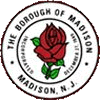
Corner of Station Rd and John Ave.
Madison, NJ 07940
Tel: 973-593-3088 Fax: 973-765-0953
WWW: www.rosenet.org/gov

263 Tabor Road (Route 53)
Morris Plains, NJ 07950
Tel: (973) 538-2224 Fax: (973) 538-8834
WWW: www.morrisplainsboro.org

Jane Way
(Located off of West Hanover Ave.)
Morris Township, NJ 07960
Tel: (973) 326-7398 Fax: (973) 326-9580
Email: teschmann@morristwp.com
WWW: www.morristwp.com

Lake Road
Morristown, NJ 07960
Tel: (973) 644-4382 Fax: (973) 292-6671
WWW: www.townofmorristown.org/

55 Pocono Road - Behind the DPW Building
Mountain Lakes, NJ 07046
Tel: (973) 334-1577 Fax: (973) 334-1494
WWW: www.mtnlakes.org

1 Altenbrand Avenue
Mount Arlington, NJ 07856
Tel: (973) 398-4200 Fax: 973-398-3344
WWW: mountarlingtonnj.org
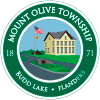
Flanders Drakestown Rd.
Adjacent to the Library
Budd Lake, NJ 07828
Tel: (973) 691-0900 x 7361
WWW: www.mountolivetwpnj.org

Flanders Road
Netcong, NJ 07857
Tel: (973) 426-7854 Fax: (973) 347-3020
WWW: www.netcong.org
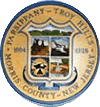
Pump House Road
(Located off Rt. 46 eastbound)
Parsippany, NJ 07054
Tel: (973) 263-7273 Fax: (973) 263-7373
WWW: www.parsippany.net

1345 Sussex Turnpike
Randolph, NJ 07069
Tel: 973.989.7050
WWW: www.randolphnj.org

103 and 105 Iron Mountain Road
Mine Hill, NJ 07801
Tel: 973-328-7001 Fax: 973-328-7791
Email: EGabrielson@republicservices.com
WWW: www.recommunity.com
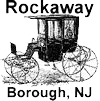
21-25 Union Street - DPW Garage
Rockaway, NJ 07866
Tel: (973) 627-2000 Fax: (973) 627-8294
WWW: www.rockawayborough.com

21-25 Union Street - DPW Garage
Rockaway, NJ 07866
Tel: (973) 627-2000 Fax: (973) 627-8294
WWW: www.rockawayborough.com
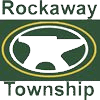
65 Mount Hope Road
Rockaway, NJ 07866
Tel: 973-983-2842
WWW: www.rockawaytownship.org

540 Green Pond Road
Rockaway, NJ 07866
Tel: 973-983-2891
WWW: www.rockawaytownship.org

96 N. Dell Avenue
Kenvil, NJ 07847
Tel: (973) 448-2053 Fax: (973) 927-2876
Email: keyesk@roxburynj.us
WWW: www.roxburynj.us

337 South Salem Street
Dover, NJ 07801
Tel: 973-366-5312 Fax: 973-366-9711
Email: recyclingvg@aol.com

54 Rock Road
Long Valley, NJ 07853
Tel: 908-876-3382 Fax: (908) 876-5553
WWW: www.wtmorris.org

North Main and Pine Street (southwest corner)
Wharton, NJ 07885
Tel: (973) 361-8444
WWW: www.whartonnj.com
Pounds Per Unit Conversions
- Each 2-Liter Soda Bottle weighs 0.11 pounds.
- Each Cubic Yard weighs 30 pounds.
- Each Cubic Yard-Compacted weighs 515.46 pounds.
- Each Pound weighs 1 pounds.
- Each Ton weighs 2000 pounds.
